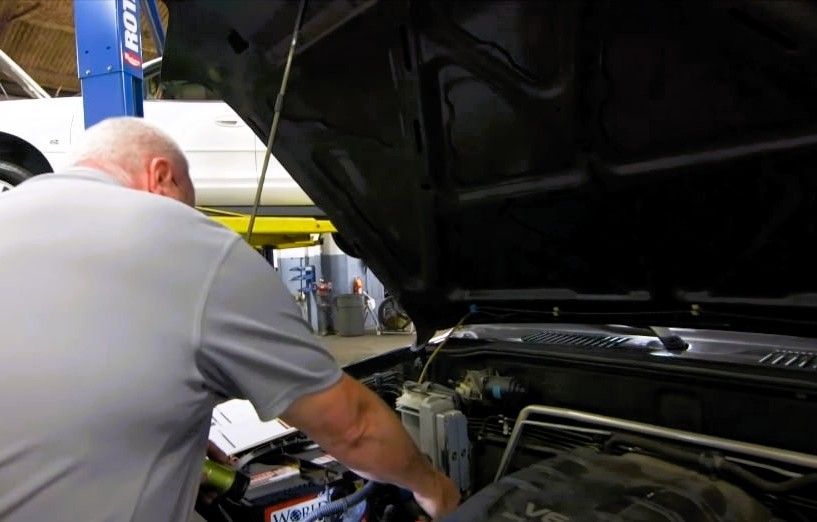How to Pick the Right Transmission Fluid for Your Car
What to check before buying transmission fluid for your car in Salt Lake City

Walking down the auto parts aisle, faced with row after row of transmission fluids, it’s easy to feel completely lost. ATF, CVT fluid, gear oil, Dexron, Mercon… it feels like a secret code only mechanics can understand.
Here’s the thing: choosing the right transmission oil doesn’t have to be confusing. Once you know the key things to check, it’s much easier than it seems. And if you live here in Salt Lake City, picking the right fluid is even more important. Between the steep canyon drives, blazing summers, snowy winters, and stop-and-go downtown traffic, your transmission works overtime. The right fluid keeps your transmission happy, so your car can keep running strong for miles to come.
Let’s walk through how to figure out the right transmission oil for your car—step by step, no jargon.
Step 1: Start with Your Owner’s Manual
Your car already knows the answer. The manual will tell you exactly which fluid belongs in your transmission.
This isn’t a “suggestion.” Using the wrong fluid can cause slipping, overheating, or premature wear. Think of it like baking: if a recipe calls for butter and you swap in olive oil, your cookies won’t come out right. Same with transmissions—they need the exact ingredient they were designed for.
Step 2: Figure Out What Transmission You Have
Not every car shifts the same way, and different transmissions need different fluids.
- Automatic (ATF): Most cars on the road are automatics. They use ATF, a special red fluid that keeps shifts smooth.
- Manual: Stick-shift cars usually need thicker gear oil to handle the extra pressure from clutches and gears.
- CVT (Continuously Variable Transmission): These newer setups don’t have gears at all. They rely on belts and pulleys, which means they need a very specific CVT fluid. Using the wrong kind here can cause serious—and expensive—damage.
Just knowing your transmission type narrows your choices right away.
Step 3: Match the Manufacturer’s Specs
Every carmaker has its own “recipe” for transmission fluid: GM uses Dexron, Ford prefers Mercon, and Chrysler vehicles take ATF+4.
This isn’t a place to guess. Using the wrong type is like wearing shoes that don’t fit—you might get away with it for a while, but eventually, it will cause problems. Always stick to the exact specification listed in your manual.
Step 4: Decide Between Synthetic and Conventional
Think of this like choosing your coffee: a regular brew will wake you up, but an espresso gives you extra kick.
- Synthetic fluid is the premium choice. It lasts longer, resists heat, and keeps your transmission cleaner. If you’re driving Salt Lake City streets, climbing canyon roads, or sitting in summer traffic, synthetic gives your car extra protection.
- Conventional fluid is the budget-friendly option. It works fine under normal driving, but can struggle under heavy stress, like mountain drives or stop-and-go traffic.
For most modern cars—and especially in Utah’s varied driving conditions—synthetic is usually the smarter choice. A small investment now can save you big headaches later.
Step 5: Don’t Buy Into “Lifetime Fluid”
Some cars claim their transmission fluid lasts forever. Sounds amazing, right? Unfortunately, it’s not true.
Heat, traffic, towing, and mountain driving all break down fluid over time. In Salt Lake City, where your transmission works harder than in most cities, changing the fluid every 50,000–100,000 miles is a wise move.
Step 6: Keep an Eye on Your Fluid
You don’t need to be a mechanic to make sure your transmission is healthy. Most cars have a dipstick—just pull it out, wipe it clean, and check the fluid’s color and smell:
- Bright red: Healthy and happy.
- Dark brown or black: Old and needs changing.
- Burnt smell: Overheating—time to get it checked.
- Pink and foamy: Coolant may have leaked in, which is serious.
Spending a few minutes checking your fluid now can prevent expensive problems later. It’s like checking your oil—small effort, big payoff.
Quick Tips for Salt Lake City Drivers
Here’s the easiest way to choose the right transmission oil for your car in Salt Lake City.
- Check your manual for the exact fluid type.
- Know your transmission type: automatic, manual, or CVT.
- Match your manufacturer’s spec (Dexron, Mercon, ATF+4, etc.).
- Choose synthetic if possible—it’s better for Utah’s varied conditions.
- Change it regularly, even if the car says “lifetime” fluid.
- Keep an eye on how your transmission fluid looks and smells.
Following these steps will not only help you pick the right fluid but also keep your transmission shifting smoothly for years to come.
Let the Experts Handle It
Still feeling overwhelmed? You’re not alone. That’s exactly why SLC Fleet Pro Mobile Mechanic exists. We’ll come to you—home or work—check your transmission, and top it off with the right fluid. No guessing, no spills, no wasted Saturday afternoons.
Picking the right transmission fluid doesn’t have to be complicated. With a little know-how (or a little help), you’ll keep your car shifting smoothly no matter what Salt Lake City roads throw at it.
Schedule a service with us today!


